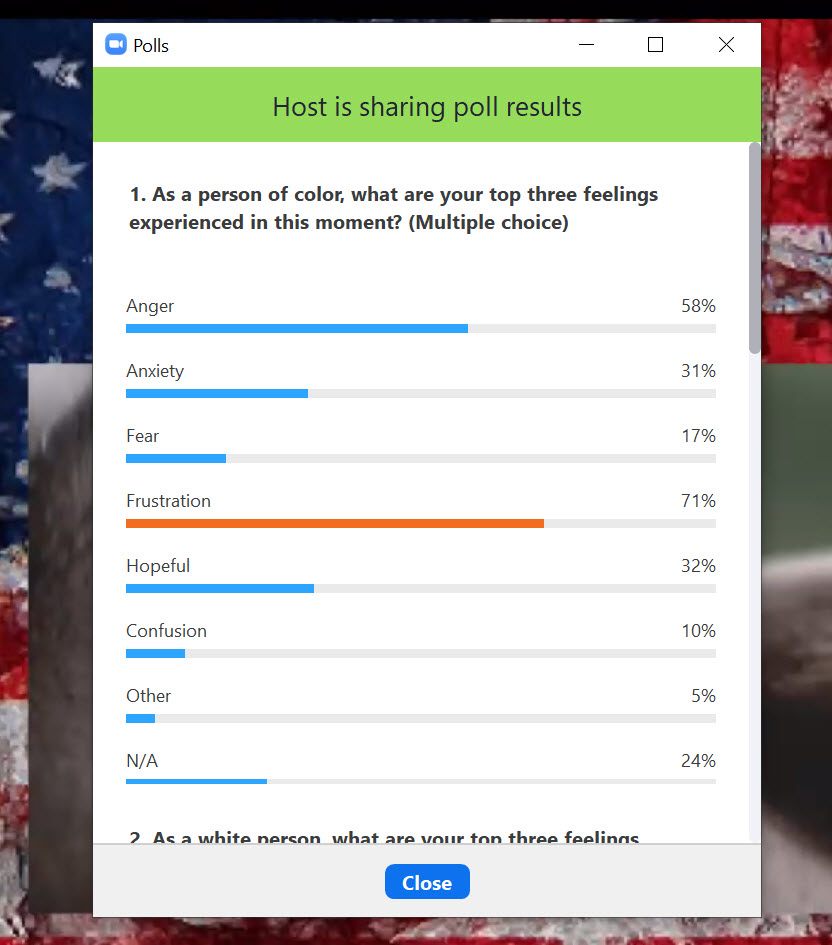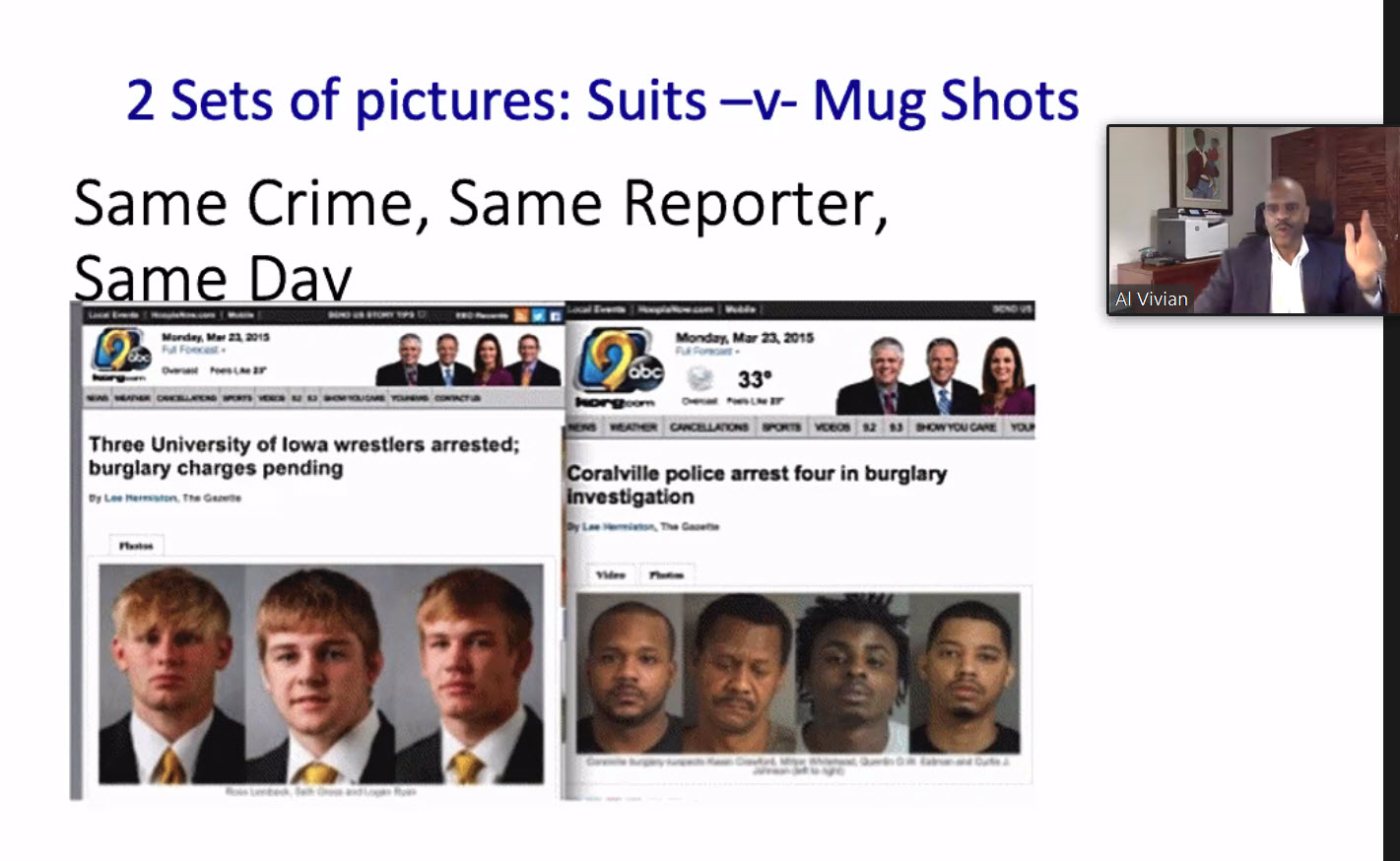How Companies Can Bring On Real Diversity
This is the moment unlike any before that can bring real change in companies, individuals and the insurance industry as a whole. But it will take introspection into ourselves and our businesses – for both whites and people of color.
That was a key takeaway from a National African American Insurance Association webinar featuring Al Vivian, an Atlanta-based inclusion and diversity consultant who was worked with clients such as Coca-Cola.
The association invited Vivian to lead a discussion about where to take the issues beyond the anger and frustration many Americans of all races have been feeling, said Margaret Redd, executive director of NAAIA, which represents 750 members across all sectors of insurance.
"The recent, senseless murders of George Floyd, Breonna Taylor, Ahmaud Arbery and countless others have highlighted the issues of systemic racism and social injustice in this country," Redd said. "These incidents have emerged to touch the hearts and consciousness of America and the world."
Vivian said Black Americans have been hopeful during other periods of upheaval that inspired a national conversation on race. But those occasions failed to move the issues forward significantly. People of color faced the same discrimination in the streets and on the job.
This time seems different because more white Americans are joining protests and pledging to make a difference, Vivian said.
“We're afraid to get our hopes up because we've done that before. And those hopes have been dashed,” Vivian said. “For me, this whole situation feels very different. My wife and I were having a conversation about two weeks before George Floyd was murdered. It was along the lines of, ‘Do you think we’ll ever see really big change in our lifetime and then, so what would it take to make that happen?’ And I said, ‘When I see the large percentages of mainstream whites step out and get mad about this issue. Cause until they do, nothing's going to change.’”
A few weeks later, the reaction to the George Floyd killing by a Minneapolis policeman gave Vivian the first real hope in his long career, first as an Army captain in the 1980s and then nearly 30 years as a diversity consultant and coach.
Even so, frustration is clearly the top sense across the board for the webinar’s attendees, according to a spot poll taken during the presentation. Frustration was the top feeling attendees identified in the poll.
But that was followed by another instant poll that showed 88% of the survey-takers said their organization’s leadership has addressed racism in the past three weeks. An additional survey showed that on a scale of one to 10, people rated the value of the conversation at eight.
Vivian said seeing that so many organizations are having that conversation makes him hopeful. But for real meaningful change, companies and individuals will have to be held accountable for fulfilling their promises.
A first step is understanding that White privilege exists.
What white privilege looks like
Many white people might say that they don’t feel that they benefit from privilege, but their privilege is baked into American society, Vivian said. He used media as an example of unequal treatment.
In two articles on the same day by the same reporter in Iowa involving the same type of crime showed the young defendants in two very different ways, in an image provided by Vivian.
\
“The pictures put up to represent white kids who were accused of burglary, they were in suits and ties,” Vivian said. “Black people arrested for burglary. He put up their mugshot from their arrest. This is the kind of day-to-day stuff that people have to deal with.”
Vivian referred to statistics from the 2018 book White Fragility by Robin diAngelo that show how pervasive white dominance is.
Some of the percentages of whites in certain groups:
100%: 10 richest Americans
96%: Governors
90%: U.S. Congress
93%: Decision-makers on TV shows
90%: Decision-makers on news coverage
95%: Teachers
82%: Full time college professors
“People are talking so much about how diverse we are as a society. How things have changed so much,” Vivian said. “If you don't have the power to call any shots, it doesn't matter what the numbers are.”
Those who are in power make decisions based on their perspective. That perspective only deepens from the cycle of confirmation.
“They can't fathom the world from the perspective of those who are not white,” Vivian said. “So, they will make decisions based on their own mindset. And that is the day to day stuff that happens all the time.”
It does not necessarily come down to simply a majority ruling over a minority. For example, South Africa has a Black majority but whites have the power.
Company action
Vivian was encouraged by responses from attendees on the question of what their organizations were doing about these issues.
Most of the respondents reported statements and general pledges their companies and leaders made, which were in line with what Vivian noted nationally.
“I'm seeing more upfront stuff from the leadership within organizations,” Vivian said. “Whereas in the past, every time like in the Trayvon Martin incident, you saw no companies connecting their brand to any of this.”
The aftermath of the Floyd killing was a stark contrast with many significant companies quickly speaking out.
“I've never seen that before in my 29 years doing this work full time,” Vivian said. “So I think that is huge.”
The actions that companies are taking matter even more, he said. In examples given by webinar attendees, some were recognizing Juneteenth as a holiday, and another was pledging to increase diversity by 3% by 2023.
“All of these things are important,” Vivian said, “but those measurable pieces like that are obviously very significant. That's when you know people are putting some meat to it. They're not just throwing out their words.”
Accountability
Although all the statements and promises are encouraging, the executives and companies have to be held accountable for them.
“Otherwise they'll go back to doing what they've always done,” Vivian said. “When they put the numbers out there, ‘We're going to increase by 3%,’ then back that up, make sure that they do that.”
A key way to boost recruiting is to connect with historically black colleges and universities to find interns and graduates to hire. It is especially important for the insurance sector, which tends to be “very, very” white, Vivian said.
Another way to boost diversity is to tie executive bonuses to the metrics, he said. Even linking a small part of the bonus to that performance can help increase the percentage of minorities and women at the organization.
“Whatever the diversity metrics you want to hold them accountable to, they will jump to do it because at that level, their concern is not only the money,” Vivian said. “It's outperforming everybody else at their level because they all want to become the next top person.”
Equal pay will also increase minority and women representation, he said. If organizations examined their payroll, most would find that they pay minorities and women less for the same positions and responsibilities.
Vivian recalled a recent conversation with two executives who were asking him how to recruit and retain more diverse talent.
“I guarantee you without ever looking at any numbers in your organization the women and the people of color are getting paid less than the white males who are equal levels and equal performance to them in the organization,” Vivian said. “If you were to go back and equalize their pay, the women and people of color, instantly you will have no problem with retention. They will all stay and they will go tell everybody that they know that is of color and that are women and they will run to your organization to get hired.”
Vivian acknowledged that these are tough questions to ask within an organization and recalled someone who was able to do it exceedingly well. It was a moment he said he would never forget, when Coretta Scott King was asked to be a keynote speaker at a diversity event put on by one of Vivian’s former clients.
“So we show up at this organization for the event,” he said. “It's me, Coretta King and all of the senior executives in the company sitting around a big boardroom table. I had only been doing training for that company and not done any consulting work.”
He had been trying to get data from the client on their hiring for years. But the execs always had reasons why those numbers were not available.
“So we're sitting in this room and Coretta King says, and she was always so poised, so graceful, she said very upright, ‘I'm just curious before I do the talk here, I want to make sure I understand the organizational culture. How many women are in senior leadership positions here?’"
The CEO stammered that the company was not doing as well as it should be. He asked the human resources administrator to produce the numbers.
“She goes, ‘And how many African Americans are in senior leadership positions here in this company?’ And she leans back and I'm sitting there going, ‘Yes! Yes!’” Vivian said. “And she sees me looking at her and she wants to acknowledge that she sees me, but she doesn't want to acknowledge it with anybody knowing. So, she just kind of tilts her eye my way. She closes her eyes, nods her head. Like, yes, I know I worked them. Watch and learn, watch and learn, young man.”
Questions are important to point out inconsistencies between words and actions. They also help undermine assumptions.
“Why is it that our senior leadership is consistently white and male? Why is it that the certain indicators that get people selected for certain things? Why is it those opportunities aren't offered that often to people of color?” Vivian said. “Just asking ‘why’ questions, because it's not that in many cases that the organization is filled with bad people trying their best to keep people out. It's not on their radar screen. What we tend to do as human beings is we hire ourselves. You got to make sure you hold them accountable, ask them ‘why’ questions and it gets people more ingrained to do this stuff.”
Steven A. Morelli is editor-in-chief for InsuranceNewsNet. He has more than 25 years of experience as a reporter and editor for newspapers and magazines. He was also vice president of communications for an insurance agents’ association. Steve can be reached at [email protected].
© Entire contents copyright 2020 by InsuranceNewsNet. All rights reserved. No part of this article may be reprinted without the expressed written consent from InsuranceNewsNet.
Steven A. Morelli is a contributing editor for InsuranceNewsNet. He has more than 25 years of experience as a reporter and editor for newspapers and magazines. He was also vice president of communications for an insurance agents’ association. Steve can be reached at [email protected].








Pandemic Life Insurance Selling: ‘Become Better Listeners’
US Appeals Court Upholds Reg BI
Advisor News
- 2025 Top 5 Advisor Stories: From the ‘Age Wave’ to Gen Z angst
- Flexibility is the future of employee financial wellness benefits
- Bill aims to boost access to work retirement plans for millions of Americans
- A new era of advisor support for caregiving
- Millennial Dilemma: Home ownership or retirement security?
More Advisor NewsAnnuity News
- Great-West Life & Annuity Insurance Company Trademark Application for “EMPOWER BENEFIT CONSULTING SERVICES” Filed: Great-West Life & Annuity Insurance Company
- 2025 Top 5 Annuity Stories: Lawsuits, layoffs and Brighthouse sale rumors
- An Application for the Trademark “DYNAMIC RETIREMENT MANAGER” Has Been Filed by Great-West Life & Annuity Insurance Company: Great-West Life & Annuity Insurance Company
- Product understanding will drive the future of insurance
- Prudential launches FlexGuard 2.0 RILA
More Annuity NewsHealth/Employee Benefits News
Life Insurance News
- 2025 Top 5 Life Insurance Stories: IUL takes center stage as lawsuits pile up
- Private placement securities continue to be attractive to insurers
- Inszone Insurance Services Expands Benefits Department in Michigan with Acquisition of Voyage Benefits, LLC
- Affordability pressures are reshaping pricing, products and strategy for 2026
- How the life insurance industry can reach the social media generations
More Life Insurance News